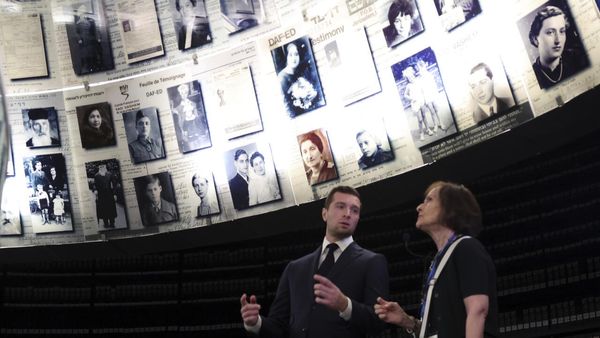
UK school pupils will soon have a chance to study British Sign Language (BSL) when it becomes a GCSE subject option.
The Government has confirmed that following a consultation, BSL will be taught in high schools from September 2025.
Pupils who study sign language will reportedly learn more than 750 signs.
Education Secretary Gillian Keegan praised the move. "Studying BSL can open so many doors for young people, giving pupils an understanding of how thousands of people communicate and ultimately even expanding job prospects," she said.
"This new qualification will not only break down barriers and give young people valuable new skills but also celebrate the history and rich culture of BSL."
It's thought that more than 150,000 people use BSL as their preferred form of communication. Learning sign language at GCSE level will help break down barriers deaf people face daily.

What is British sign language?
BSL is one of the main ways in which deaf people in the UK communicate.
It uses hand gestures, facial expressions, and body language to express visual communication.
BSL has a grammatical structure and word order, meaning its sentences aren't necessarily the same as spoken English. For example, in BSL, a sentence may be communicated like: "Breakfast I made" instead of "I made some breakfast."
No one is thought to have created BSL, either. Instead, it is a form of communication that has evolved over time and throughout use in growing deaf communities.
BSL was recognised as a minority language in the UK in only 2003. The British Sign Language Act was implemented only in 2022 to ensure all public services were accessible to people who use BSL in England, Scotland, and Wales.
According to Access BSL, between 20,000 and 100,000 signs could make up this form of communication. However, it's not as difficult to learn as some may think.
Is sign language universal?
The name 'British Sign Language' might be a giveaway here, as sign language is not universal.
Sign Solutions claims that there are 300 sign languages in use worldwide, with nuances based on countries and regions.
Other English-speaking countries such as the US and Australia have sign variants, known as American Sign Language (ASL) and Auslan.
While BSL communicators tend to understand Auslan, there are significant differences between BSL and ASL. This means both deaf communities may face challenges when communicating with each other.
Although there are similarities across many sign languages, meaning deaf people can communicate to a degree, a universal sign language that can be used worldwide does not exist.
How to learn sign language in the UK
When the BSL GCSE is introduced in 2025, any student of any age will be allowed to take the course.
No prior knowledge of sign language is expected, meaning students who haven't been exposed to BSL can also take the course. It doesn't form part of the curriculum, meaning it's not compulsory.
In the meantime, several online courses, YouTube videos, and in-person meetings are available for those looking to learn BSL.
You can visit the Signature website to find evening classes nearby.
All the languages you can study for GCSE
According to the AQA website, the languages you can learn at GCSE include German, Spanish, French, Italian, Polish, Bengali, Urdu, Modern Hebrew, Mandarin, and Panjabi.
Pearson, another exam board, offers French, German, Spanish, Arabic, Biblical Hebrew, Chinese, Greek, Gujarati, Italian, Japanese, Persian, Portuguese, Russian, Turkish, and Urdu.







